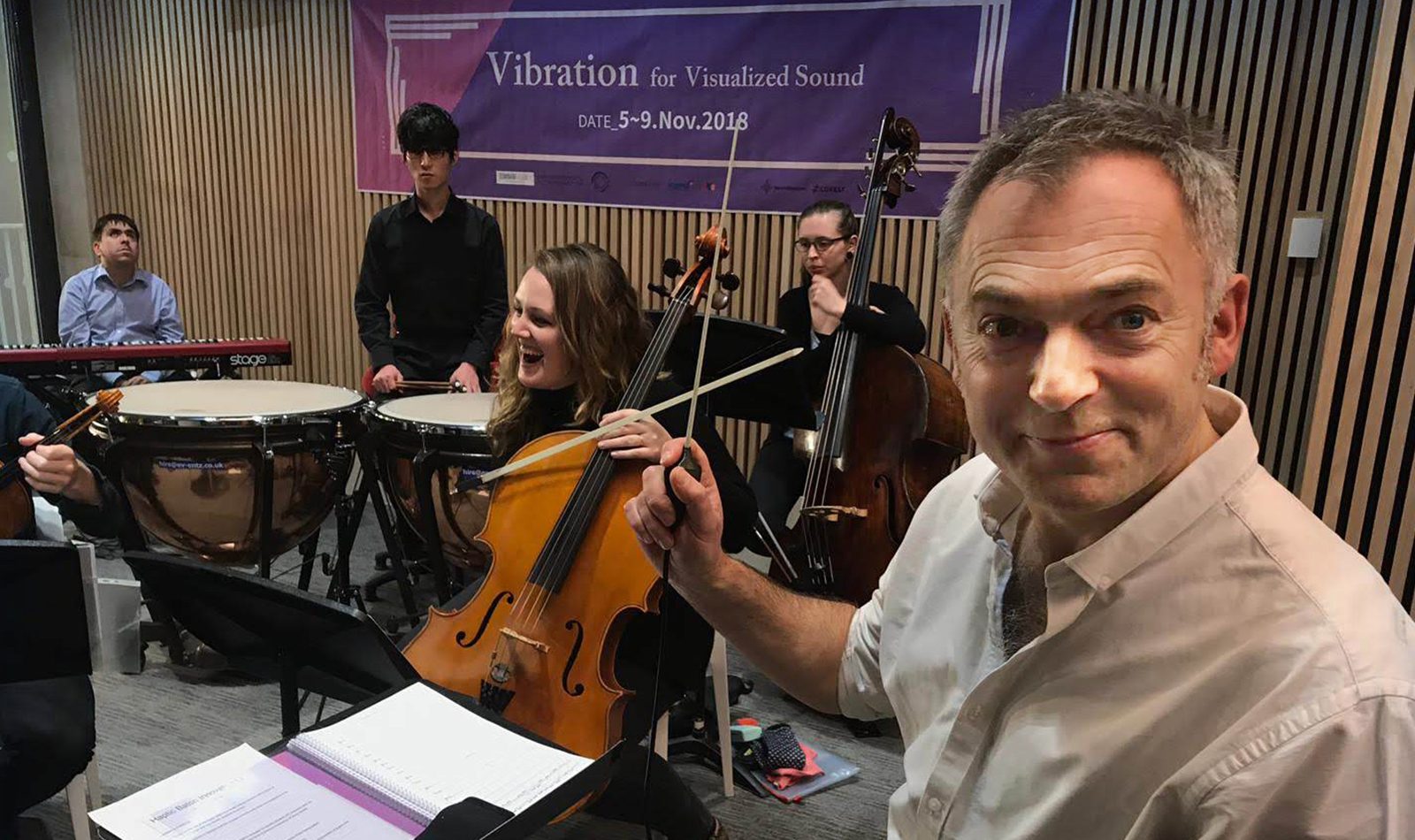Ever wondered how visually impaired and blind musicians follow a conductor?
Probably something a lot of people have never considered, most musicians read music and follow a conductor with their eyes, but visually impaired and blind musicians not only need to memorise scores, but also find a non-visual way of taking cues from a conductor. The upbeat, for example, (when the conductor raises their baton to indicate the start of the piece or change of tempo) is ‘sensed’ by blind musicians, perhaps by listening for an intake of breath or movement from the person next to them.
Recently, we partnered with Human Instruments, innovators of accessible musical instrument technology, to trial a brand new haptic baton, designed to replicate the movement of a conductor’s baton. A microchip inside the baton transmits wireless signals communicating the precise movements of the conductor to devices worn on the wrists or ankles of the musicians. The devices translate the signals into vibrations enabling the musicians to follow a conductor.
British Paraorchestra pianists Rachel Starritt and Kevin Satizabal, who are both blind, joined Paraorchestra and Friends’ Artistic Director and conductor Charles Hazlewood, Vahakn Matossian from Human Instruments who designed the Haptic Baton, and six blind musicians from South Korea, in a two-day workshop to test and feedback on the new technology. The ensemble performed Beethoven’s 5th Symphony along with a new piece by a South Korean composer to an invited audience at the end of the two days.

It is anticipated that this new technology will finally remove a barrier that has prevented talented visually-impaired musicians from joining leading orchestras worldwide.
When playing as a soloist, Kevin Satizabal said he has previously had to sit close to the conductor and listen for their breathing to know when to begin.
“But if you’re in a big orchestra, and you’re miles from the conductor, that’s going to be really, really difficult information to pick up and this technology essentially plugs you into the conductor’s movements, which is really exciting,” he said.
“Orchestras won’t have any excuse not to hire visually impaired musicians because the technology’s right there allowing them to be an integral part,” he added.
You can read more about it in this article from The Telegraph. There’s also been some coverage of the project on BBC – this World Service radio documentary In the Studio and in this BBC Stories short film.






